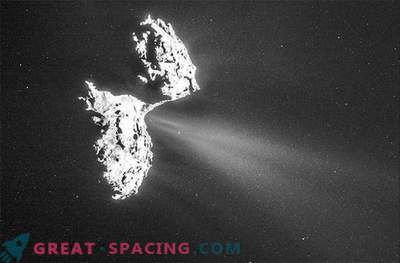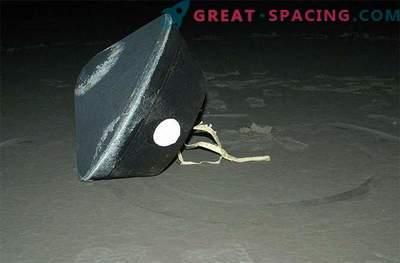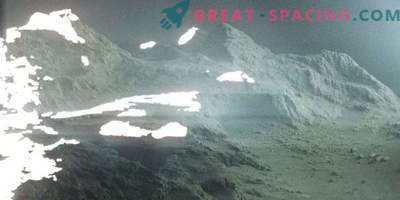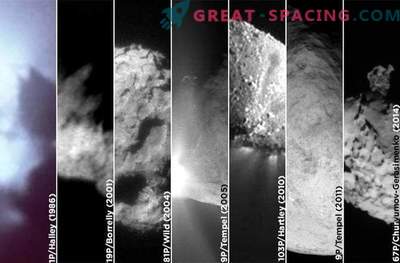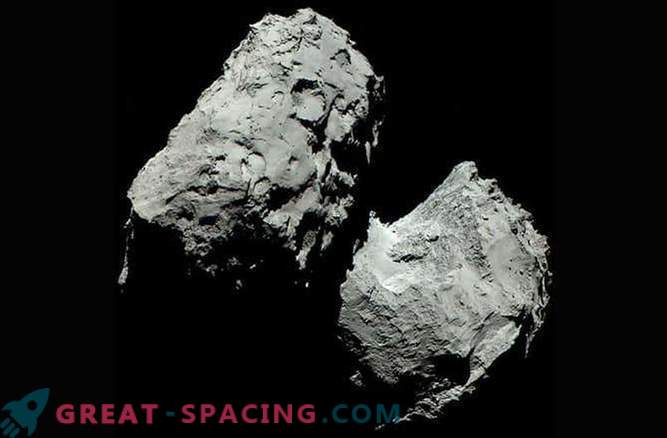
For nearly two years that the European spacecraft was on comet 67P / Churyumov-Gerasimenko, we learned a lot about how comets behave when they fly closer to the Sun.
Rosetta's adventures are not over. Recently, the spacecraft photographed a very dusty area, going to safe mode and rising to a higher orbit of a comet. Here are some of the highlights of the last few weeks:
Dusty environment

On this frightening image of the Rosetta, you can see a lot of dust flying off the comet. In March of this year, scientists discovered that the dusty trail of a comet stretches for an incredible 10 million kilometers (6 million miles).
"The long plume consisting of larger fractions left in orbit probably comes from the previous passages of the comet around the Sun," the European Space Agency (ESA) said. "When the Earth passes through similar dust trails from other comets, this leads to the formation of meteor shower. Unfortunately, this will not happen with 67P, the Earth does not pass through the orbits of this comet."
Chronicle of the Solar System
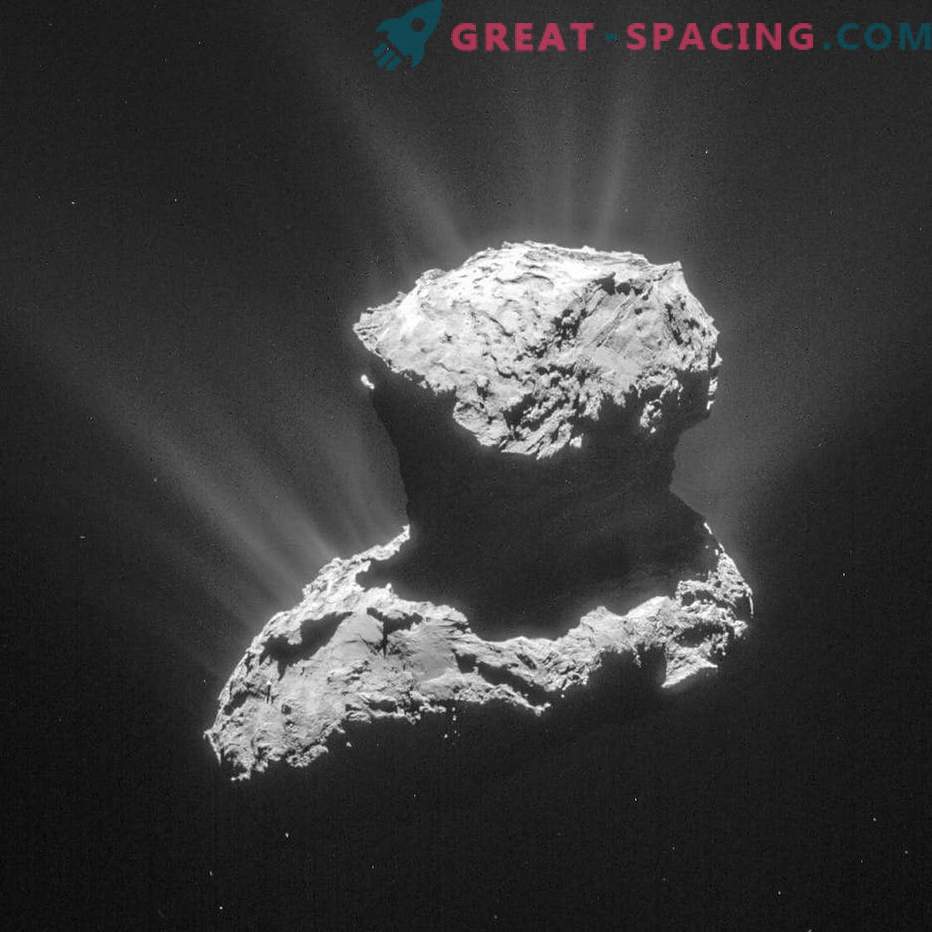
Scientists hope that Rosetta will tell us something about the formation of the solar system. For example, could comets bring water to Earth, and whether there are organic molecules on their surface. At the end of May, scientists announced that they had found glycine amino acids, which are part of proteins and phosphors, which in turn are part of DNA and cell membranes. Thus, glycine was first detected on a comet. Despite the fact that the Stardust mission found traces of amino acids on Comet Wild-2, those samples received contamination.
“We see a close relationship between glycine and dust, suggesting that they may be released along with other volatile components from icy dust particles when they heat up in a coma,” said Catherine Altvegg, principal investigator of the ROSINA tool.
Switch to safe mode
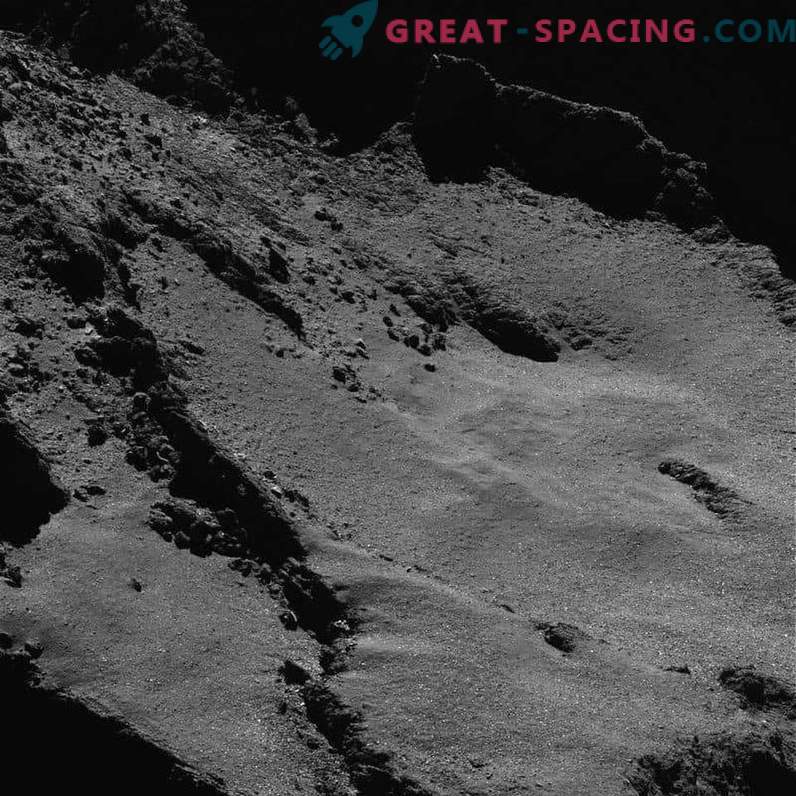
Since Rosetta is experiencing such an impact of a dusty environment, unexpected things happen from time to time. Among them can be noted on May 28, when the spacecraft went into “safe mode”, confusing dust with stars, which are used for navigation. The spacecraft lost contact with Earth, and for about 24 hours the team restored it by sending commands.
It took the controllers a few days to make sure that the spacecraft was in perfect order and to transfer the scientific instruments back to normal. By June 2, Rosetta was already functioning normally.
Back to the Abyss
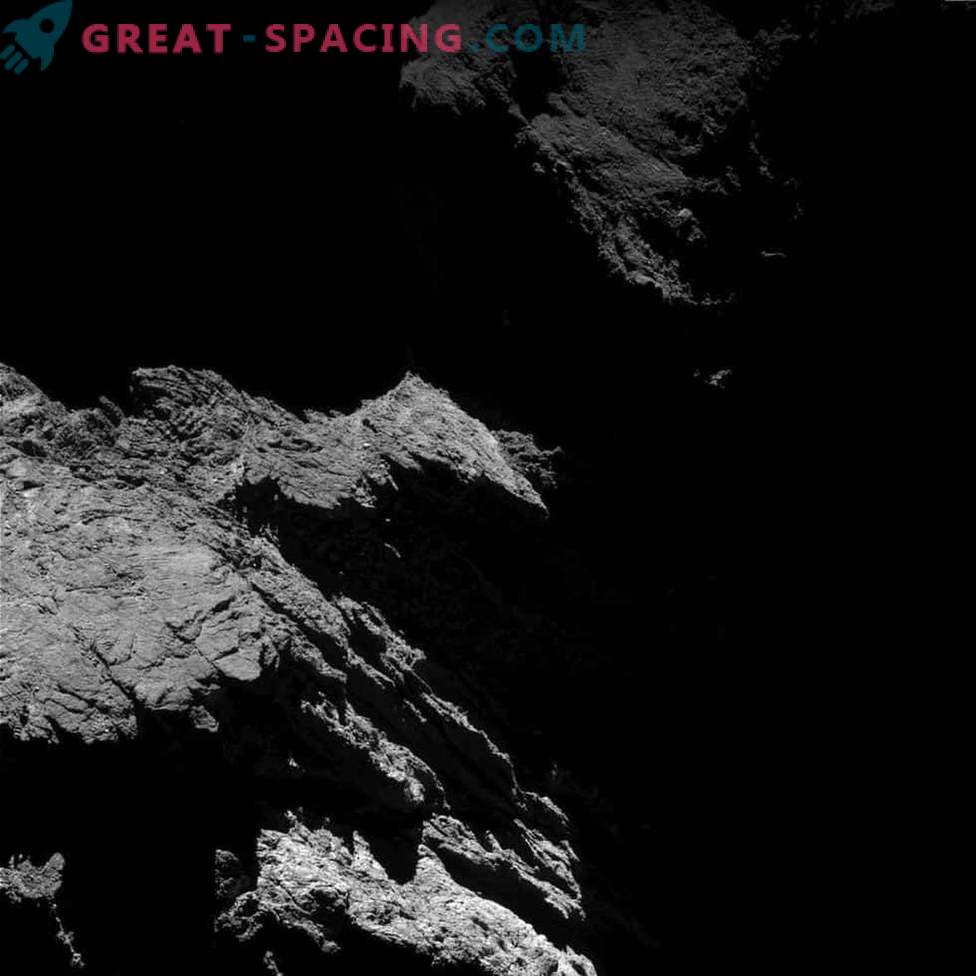
During its 670-day mission, Rosetta continues to take amazing pictures of her comet. This photograph shows the “neck” of a comet when the spacecraft was at a distance of 8 kilometers from the nucleus. This week, the unit entered a 30-kilometer orbit, retiring more than 20 km from the previous one. Other recent Rosetta finds are clathrates (a type of crystalline ice). It is believed that if the comet 67P / Churyumov - Gerasimenko is covered with ice of this type, it could have been formed during the approach to the Sun.
Public Assistance
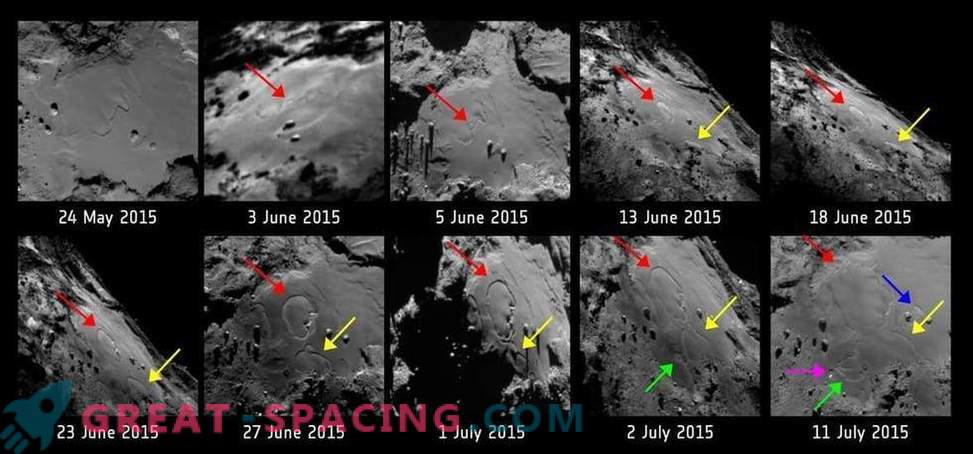
Rosetta took more than 20,000 photos of the comet 67P / Churyumov-Gerasimenko, and the officials posted these photos in open access with the hope that the public would help them analyze the material to determine any changes on the comet.
"Remember that it is necessary to be careful when comparing images of the same region that were obtained in different lighting conditions or from different distances and, therefore, have a different scale. Sometimes this can lead to erroneous identification," writes ESA.
